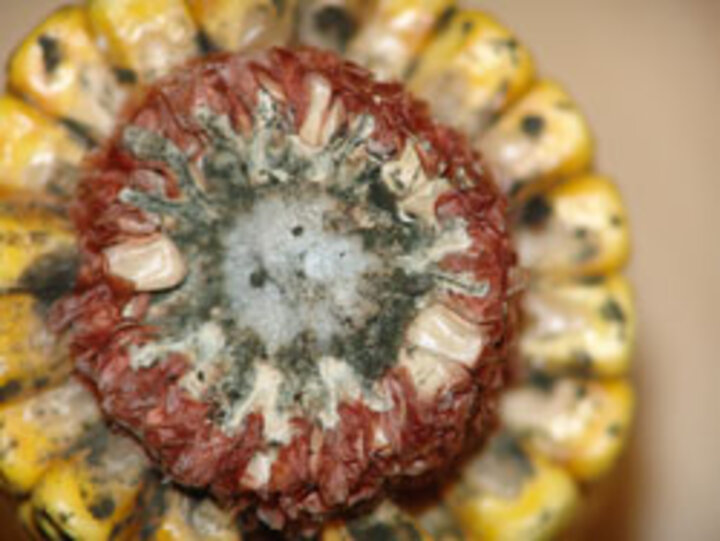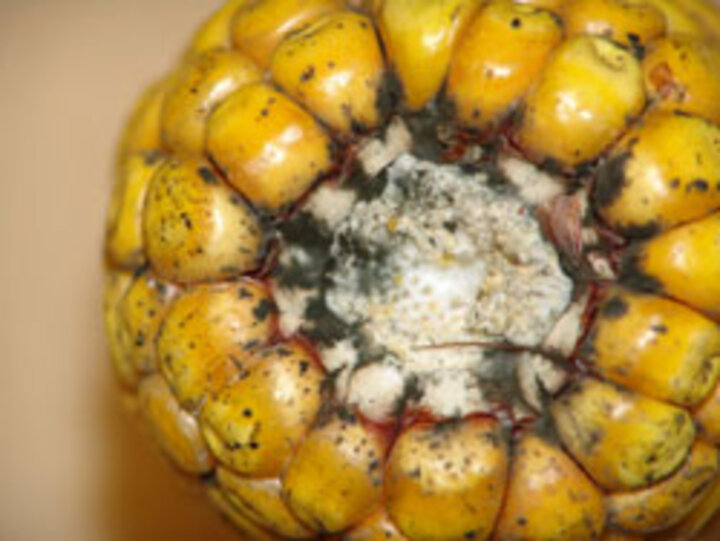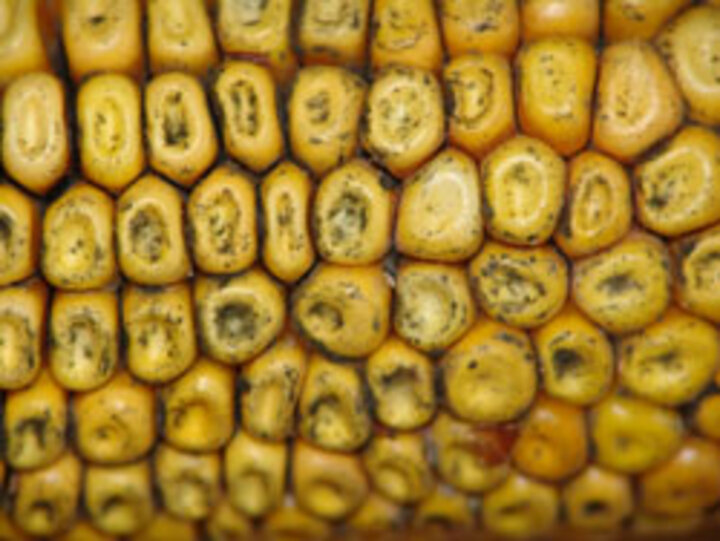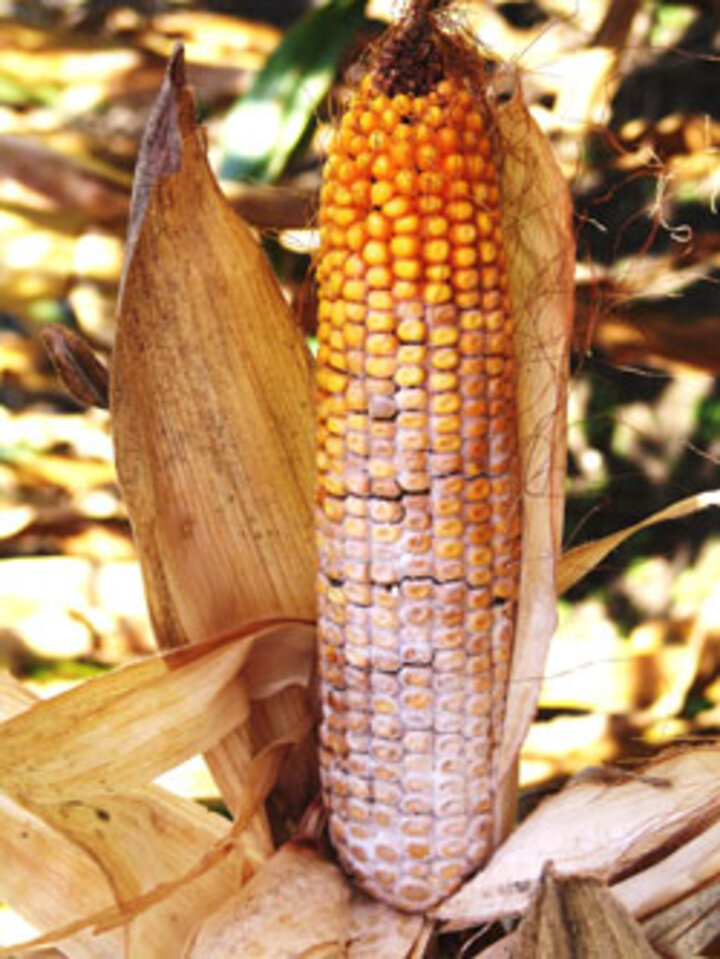Grain moisture continues to be high in some fields as producers take advantage of this week’s drier conditions to harvest. Ear rot diseases have been reported to varying extents in some fields and the high grain moisture is partially to blame. This article is a follow-up to the October 23, 2009 CropWatch story on ear rot diseases.



Figure 1. At higher moisture levels, saprophytic fungi colonize otherwise disease-free grain, as seen in samples submitted to the UNL Plant and Pest Diagnostic Clinic. 
Figure 2. Diplodia ear rot is one example of a disease that can cause ears and kernels to lose test weight quickly. |
Not all fields are severely affected and those that do have some low level of ear rot disease(s) may still be very high quality. It is worth the time it takes to scout these fields — especially those at higher risk for disease — to determine the extent of any damage and prioritize which ones will be best to store versus selling or using immediately.
Like most other diseases, ear rots are not evenly distributed across a field and may be patchy. The fungi causing these diseases are opportunistic, taking advantage of the humidity and moisture inside the husk and any ear wounds from hail or insect or other animal feeding. It’s important to remember that the fungi that cause these diseases (and other fungi, too) can and will likely continue to grow in the bin, especially when grain has not been dried down appropriately for storage (a very difficult task right now, I know).
Now that plants in the field have died, their natural defense responses can no longer slow or stop infections. In addition to the ear rot diseases described in the October 23 issue of CropWatch, additional fungi also can colonize grain. Most of these fungi are saprophytic, meaning that they survive on dead material. These are the same ones responsible for breaking down crop residue in the field.
These organisms have been found growing on corn ear samples recently submitted to the UNL Plant & Pest Diagnostic Clinic (Figure 1), but generally had not been found causing the more typical ear rot diseases earlier in the season. Also, grain is richer than crop residue in the nutrients and sugars that support faster growth of these fungi, especially under wetter conditions.
Some corn kernels infected by fungi that cause ear rot diseases, such as Diplodia ear rot (Figure 2), will become lightweight and can be blown out of a combine during harvest. It’s important to optimize combine settings to manage for this and to prevent damage to kernels that would allow fungal infections to progress more rapidly in storage.
Grain Storage. Due to this season’s narrow harvest window, some producers may choose to harvest and store high moisture corn and disregard the need to dry grain with ear rot to less than 15% moisture (optimal for longer storage) or at least less than 18% (for shorter term storage). With this in mind, there are several things to consider when storing high moisture corn which may have been from diseased plants.
The fungi that cause ear rot diseases are the same ones that can/will lead to grain molds in the bin. In turn, this can lead to more serious grain quality issues that could compromise the value of the corn and lead to mycotoxin accumulation. (For more information see Concerns about Mycotoxins in the 2009 Corn Crop.)
This can lead to increased problems when grain is brought out of storage to sell. Under the very best storage conditions, grain quality may stay the same, but under most conditions, and especially now with higher moisture grain, it is more likely that grain quality will decline during storage. Even at this late harvest date, it is probably worth the time and expense to dry and store it correctly rather than store it quickly.
Grain for Silage. If you’re storing grain in bags for silage, earlage, etc. to promote fermentation, the growth of these fungi will be hastened when grain moisture is high and temperatures are still warm. Eventually, once oxygen is depleted and fermentation begins, it may indeed slow mold growth, but the process may take several days to weeks to do so. During this time the environment inside the bag will likely act as an incubator for fungi, allowing them to grow even more rapidly than they would inside a bin.
Tamra Jackson
Extension Plant Pathologist
Amy Ziems
Extension Educator
UNL Plant & Pest Diagnostic Clinic
